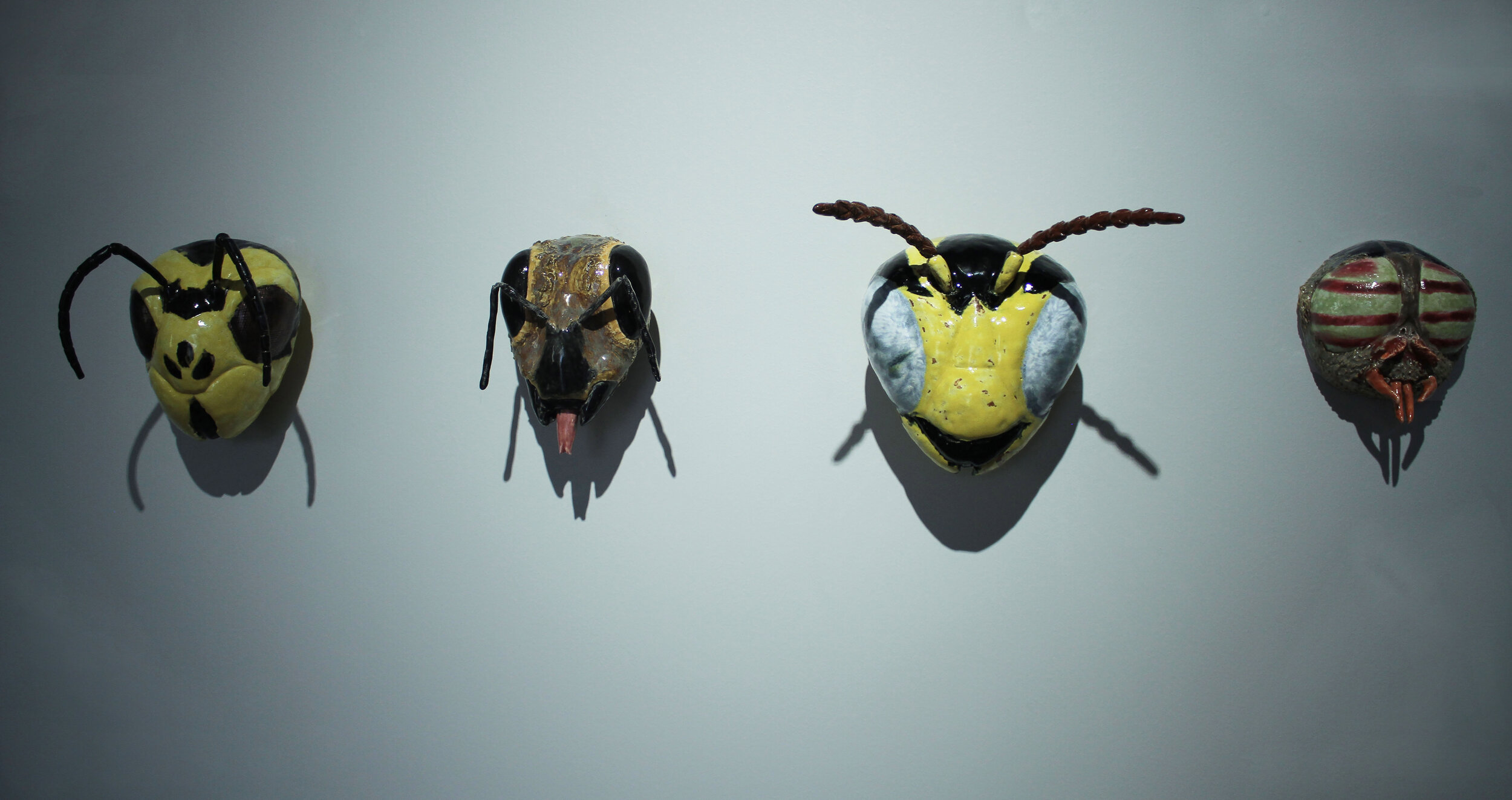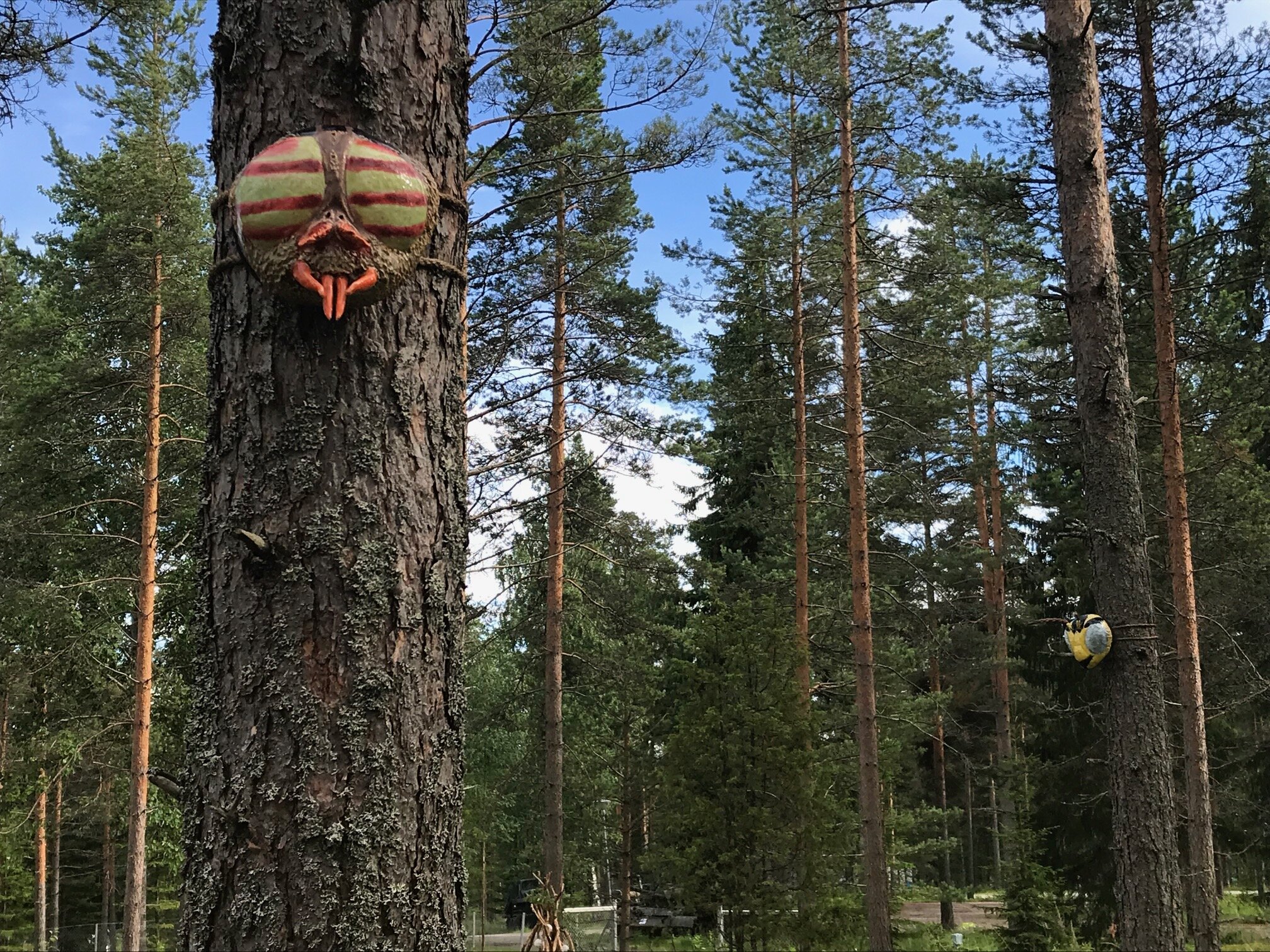Matkan Päästä Kaikki on Pientä 2020
I exhibited five artworks collectively named ‘From a distance everything looks small’ in the Art Centre Mältinranta in Tampere. I think the installations worked well together as the idea and themes came from the threats we face in the present day world. I relate to the themes although they do not necessarily recreate anything that I myself have experienced. The constant flow of news make it feel as if I was there myself. The regular updates make distances disappear and it all feels like happening right here, right now. The refugee crisis, bacteria and viruses stalking us in airports and cracks of our bathroom walls causing epidemics and the growing cities that swallow natural resources around them are illustrated in material form in the exhibition. The works were also inspired by the high windows and light blue tiles of the space.





Epidemic
I became interested in the world of micro-organisms and the diversity of their forms which a lay person, not involved in the field, can only imagine. I imagined them growing, multiplying and spreading. As a base I used a bathtub with ceramic creatures in it. I also constructed a piece of tiled wall simulating the walls of the exhibition space. The glaze was dyed with pigments.









The team of loosers
The work is made up of five separate pieces. They are ceramic heads of pollinators, mostly differed species of bees. At close range the faces of insects look fierce; armoured with big eyes. The eyes do not blink, the faces are expressionless unlike the faces of mammals or birds. The proportions are different and the eyes see a different world from us, their perception is different. The loss of pollinators can disrupt nature’s balance in unexpected ways. The work is entitled The Team of Loosers. In sport it’s important to spot the winner, but isn’t it important to side with the looser instead? The work was also displayed at the 2020 summer exhibition of Saimaa Art Caves in Punkaharju, where the insect heads were hanging in trees along the exhibition’s nature walk.




The Demolition Site
I scaled a building demolition site down to furniture size. Demolition sites are impressive places. Lived lives and organised history that can be interpreted and studied disappears in a pile of rubbish. Demolition sites can look oddly similar to war ravaged streets in the news pictures. For a basis for this work I bought a beautiful old Billnäs desk, broke it and disassembled it to pieces.




The Thunder Storm Tent
The visitor is invited to go into the tent to listen to the sounds of thunder that also reminds us of war. There are rumbles of thunder, gusts of wind, a dog barks, airplanes fly over and helicopters hover above. The tent shivers as it is attached to a motor. The light comes from a video tape of moving trees projected to two sides of the tent. The sounds were recorded with the help of Ari Keltamäki and his equipment. Video editing and the technology for the tent were implemented by Pekka Järvilehto. The idea for the work came from my experience of a night in a tent during the heaviest storm ever in Finland. The refugee crisis started a year later and tents became a symbol of the crisis.



Light Pollution
A canvas is hung from the windows of the exhibition space. The canvas is pierced with light spots revealing the outline of Europe at night. The light spots show not only where people live, but also the centres of power and wealth. The dark areas do not express themselves. For me light maps have always been melancholic. Man has conquered the world ad drawn the borders. Where is it worth belonging to?